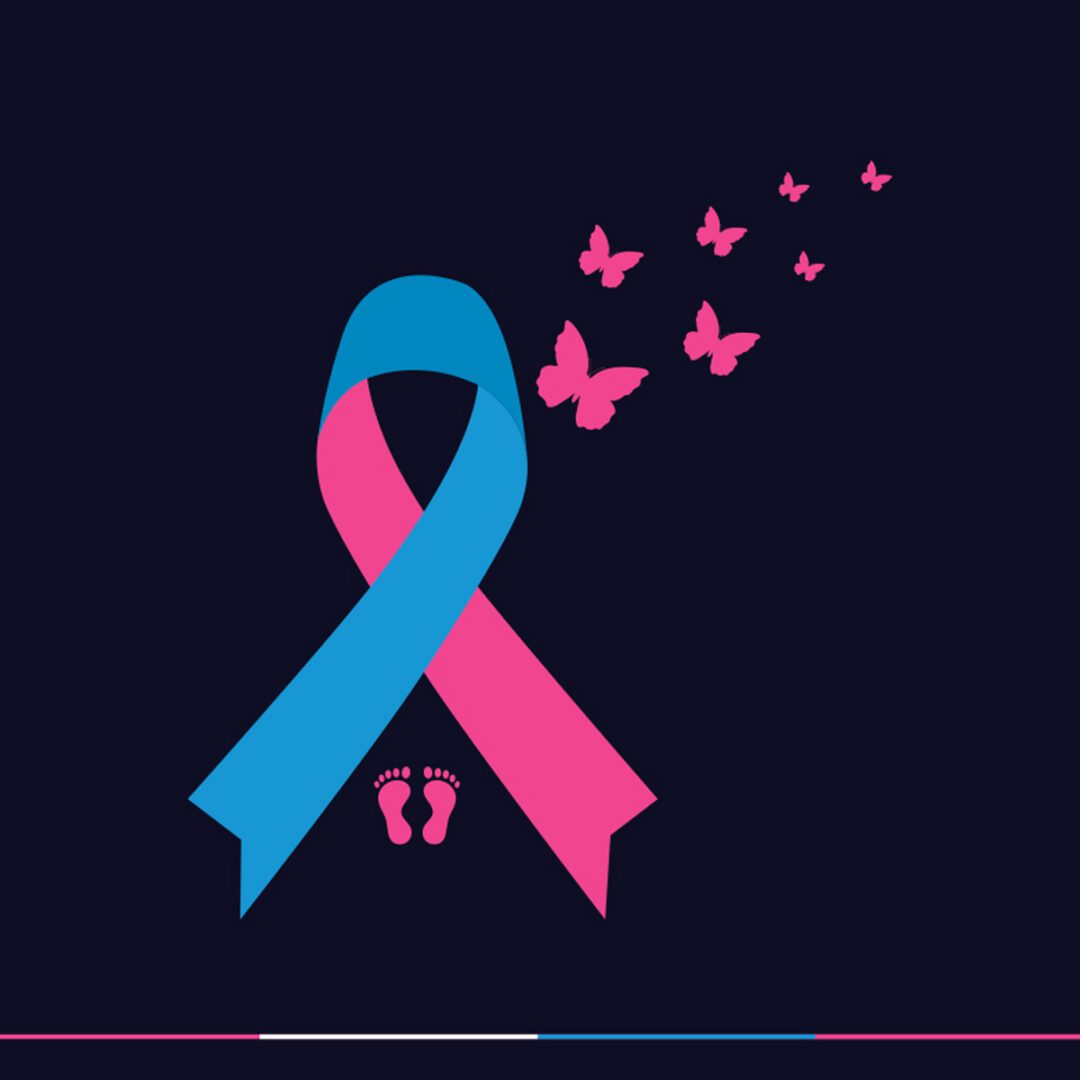Search by Color or Cause


Pregnancy and Infant Loss Awareness Month takes place on October 15 each year. Miscarriage, stillbirth, and other conditions can cause a pregnancy to end before or during birth. In addition, infant death can be caused by preterm birth, birth defects, and other health conditions.
On this day, various local, national and international organizations come together. For example, they organize events, educational programs, and various activities. These activities serve to create awareness about infant loss. And, further, they focus on improving education and preventive efforts. These efforts may aid in decreasing the frequency of unfortunate deaths of infants.
Wear a pink and blue awareness ribbon pin to observe Pregnancy and Infant Loss Remembrance Day.
The International Wave of Light is observed annually on October 15. It is a day of remembrance for pregnancy loss and infant death, which includes but is not limited to miscarriage, stillbirth, SIDS or the death of a newborn. The ceremony seeks to ease the pain of families who have lost a child by offering another means of acknowledging and remembering a deeply loved and missed family member.
During the Wave of Light Ceremony, people all over the world light candles for one hour to honor the memories of children gone too soon. The continuous chain of light encompasses and spans across the world and around the globe for a 24-hour period illuminating the night in love and light in honor and remembrance. In each time zone, the observance takes place at 7:00 PM local time.
Miscarriage is the most prevalent cause of pregnancy loss. Pregnancy loss is defined differently in different countries. Still, a baby who dies before 28 weeks of pregnancy is generally called a miscarriage. Babies who die at or beyond 28 weeks are called stillbirths.
Nearly 21,000 babies are stillborn each year. Many of these deaths are avoidable. However, even in developed countries, miscarriages and stillbirths are not systematically recorded, suggesting that the numbers could be substantially higher.
Miscarriages can occur for various causes. These include fetal abnormalities, the mother’s age, and infections. Many of these are preventable, such as syphilis and malaria. However, pinpointing the particular cause is sometimes difficult.
It is estimated that as many as 26% of all pregnancies end in infant loss. Furthermore, 80% of early pregnancy loss occurs in the first trimester. After 12 weeks of pregnancy, the risk of miscarriage reduces. Many stillbirths have unclear reasons. Stillbirth occurs in families of all ethnicities, races, and socioeconomic backgrounds and in women of all ages.
Maternal age is a significant determinant of miscarriage risk. The probability of miscarriage before 20 weeks gestation in women aged 20 to 30 is 8.9%. This increase to 74.7% for women over the age of 40.
Prior obstetrical history is another key predictor of early pregnancy loss. The probability of miscarriage in a future pregnancy is around 20% after one miscarriage, 28% after two consecutive miscarriages, and 43% after three or more consecutive miscarriages.
Women have varying levels of access to healthcare services. For example, hospitals and clinics worldwide in many countries are frequently under-resourced and understaffed. Further, as diverse as the experience of losing a baby may be, stigma and guilt emerge as similar themes worldwide. As first-person tales demonstrate, mothers who lose their kids are made to remain silent about their loss, either because miscarriage and stillbirth are still so common or because they are thought to be unavoidable. World Pregnancy and Infant Loss Remembrance Day is established to create public awareness of pregnancy loss. And to recognize the importance of acknowledging their lives and the impact it has on families.
On this day, in honor of Pregnancy and Infant Loss Remembrance Day, around the world people light a candle at 7 PM in their own time zones to create a wave of light in memory of babies lost to pregnancy and infant loss.
In 2002, Robyn Bear, Lisa Brown, and Tammy Novak have started the movement by petitioning the federal government to recognize the World Pregnancy and Infant Loss Remembrance Day on October 15. In 2006, on September 28th, the House of Representatives approved National Pregnancy and Infant Loss Remembrance Day.
Taking care of the body is the best thing one can do to maintain a healthy lifestyle before and during pregnancy.
Some of the suggestions to prevent Pregnancy and Infant Loss include: